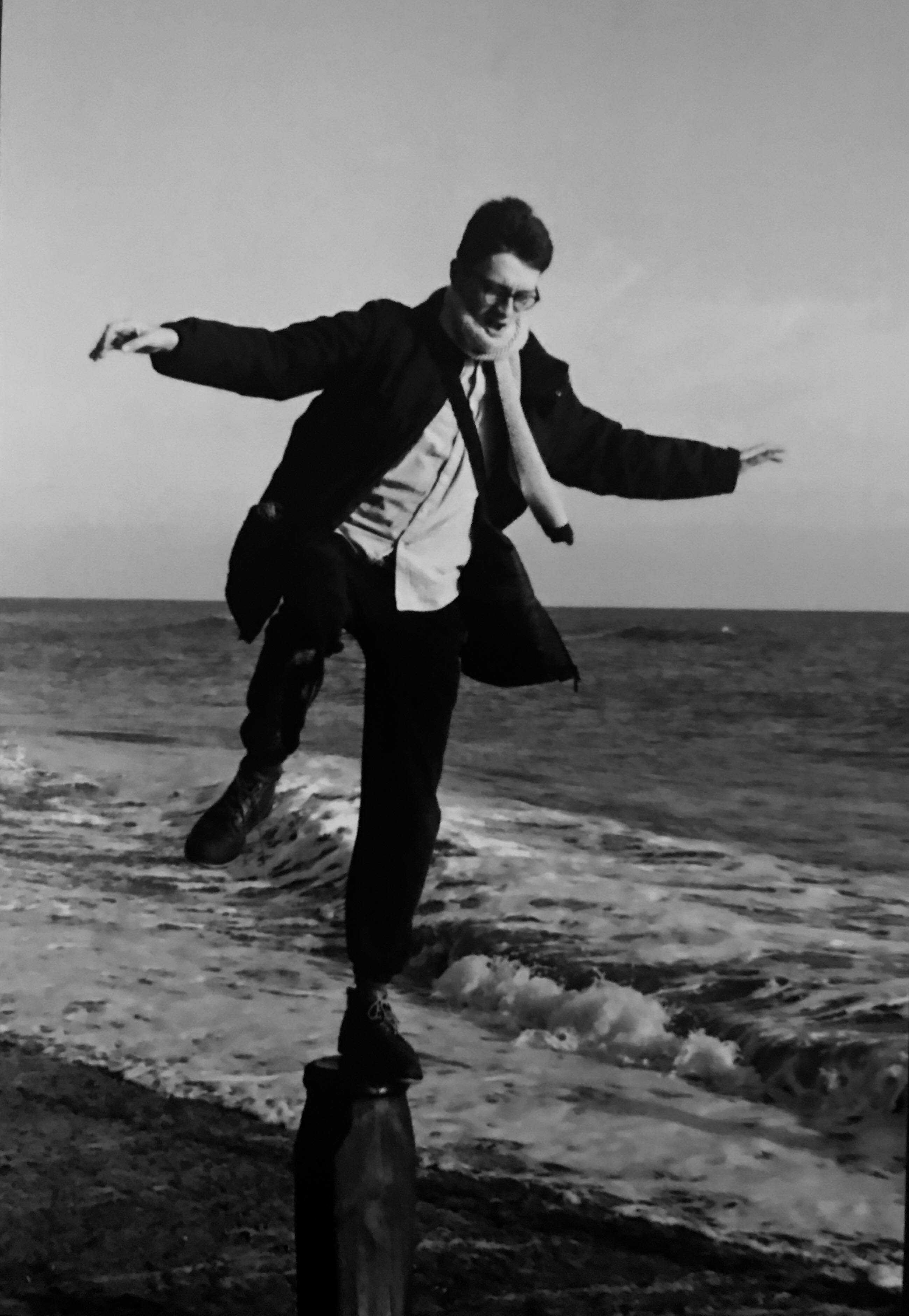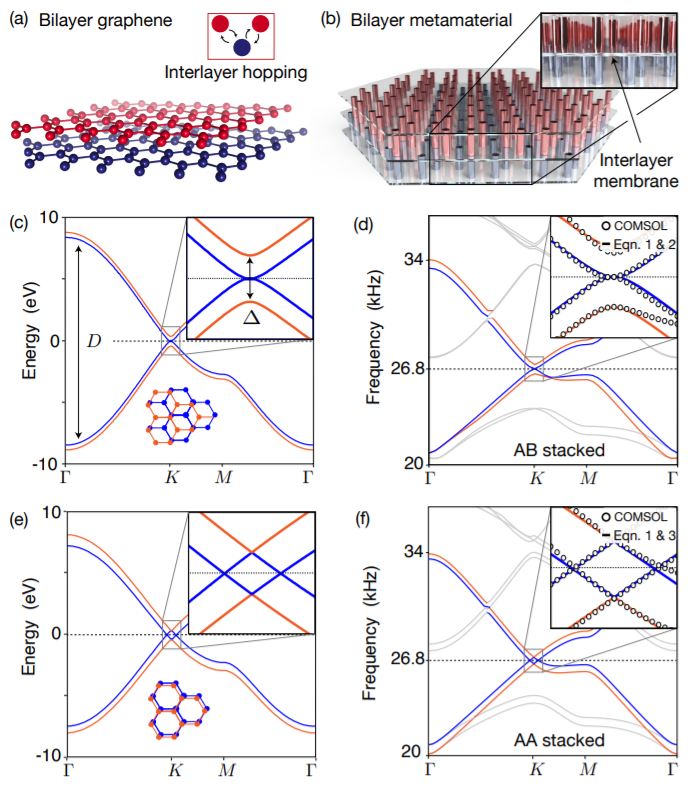

The behaviour of solids is determined by interactions between the elements that make them up; for example, if there are free electrons in a metal it will conduct electricity. But it is suprising how much of the behaviour is just a result of geometry: send a wave (for example sound) through a lattice of pillars and the way the sound bounces around will be similar in many respects to the way an electron bounces through a lattice of metal atoms.
There's been a class of materials that have caused much excitement recently: van der Waals materials. These are made from layers of atoms much like the two layer structure in the figure below. It has recently been found that some of these materials are superconducting, meaning electrons can flow with zero resistance. There remain many mysteries around superconductivity which if solved may permit their use in everyday settings, for example in the national grid, avoiding the wasted energy that is turned into heat by the resistance of the wire.
In our intial paper we recreated some of the behaviour of these materials but by replacing the electrons bouncing around atoms with sound bouncing around pillars. This means rather than doing experiments at freezing temperatures with minature devices we can just fire sound through an array of iron pillars.
In a follow-on piece of work our team was able to recreate the key features of the superconducting metal within an acoustic system, which was super exciting to see!
Van der Waals heterostructures are an active frontier for discovering emergent phenomena in condensed matter systems. They are constructed by stacking elements of a large library of 2-dimensional materials that couple together through van der Waals interactions. However, the number of possible combinations within this library is staggering, so fully exploring their potential is a daunting task. We introduced van der Waals metamaterials to rapidly prototype and screen their quantum counterparts. These layered metamaterials are designed to reshape the flow of ultrasound to mimic electron motion. In particular, we show how to construct analogues of all stacking configurations of bilayer and trilayer graphene through the use of interlayer membranes that emulate van der Waals interactions. By changing the membrane’s density and thickness, we can also reach coupling regimes far beyond that of naturally occurring graphene. We anticipate that van der Waals metamaterials can be used to explore, extend, and inform future electronic devices. Furthermore, they allow the transfer of useful electronic behavior to acoustic systems, such as flat bands in magic-angle twisted bilayer graphene, which may aid the development of super-resolution ultrasound imagers
Read the original paper here.
This has since been extended by our team to simulating the flat bands of magic angle twisted bilayer graphene in acoustics, see the paper here. (Or the version on arxiv), as well as by another group in photonics

Figure: (a) We recreated interlayer hopping in bilayer graphene using (b) two layers of honeycomb metamaterial separated by a flexible membrane. (c) In AB-stacked bilayer graphene, the Dirac cones hybridize to create a ‘kissing’ band structure. (d) With an interlayer membrane made of 0.19-mm thick HDPE, the same effect is seen in our bilayer metamaterial. This effect is well described by the same tight-binding Hamiltonian used to describe bilayer graphene (inset). (e) In AA-stacked bilayer graphene, the structure of the Dirac cone changes. (f) By stacking our metamaterial in the AA configuration, it accurately captures the AA graphene Dirac cone structure.